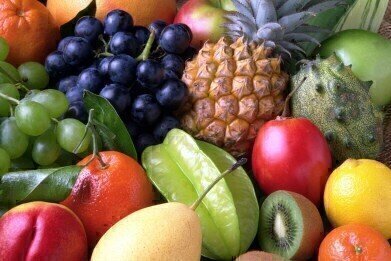News & Views
Edible Silk Coating Could Mean the End of Mouldy Fruit
Jul 07 2016
At some point or another, we’ve all made the mistake of buying too many bananas for the fruit bowl. More often than not, they go brown and end up in the bin. Or if you’re into baking, banana bread is always a winner! That said, the sight of fruit that’s past its prime is eternally frustrating. But thanks to a new innovation from a team of researchers, a silk coating could be the key to preventing fruit from going mouldy, even when stored at room temperature.
From cacoon to fruit bowl
Published in the journal Scientific Reports, the study asserts that a structural protein called silk fibroin is highly effective in the prevention of ripening. With a structure that’s similar to collagen, silk fibroin features a host of unique properties that make it ideal for cocoons, including the presence of alternating hydrophobic and hydrophilic blocks. This allows the material to regulate water evaporation, as well as control the diffusion of gases like oxygen and carbon dioxide. As well as supporting the growth of pupa, it turns out that these characteristics are also highly effective at slowing cell respiration within perishable foods. This means that when it comes to decelerating the ripening process, a silk fibroin coating could be every fruit lover’s new best friend.
A refreshing dip…
So how does it work? Led by Fiorenzo Omenetto, the team of researchers created a silk fibroin dip, which they used to coat strawberries. This created a thin, invisible layer on the surface of the fruit. They found that even when left at room-temperature for a week, the strawberries retained their colour, juiciness and firm texture. Meanwhile, their uncoated counterparts simply rotted away. The same theory was tested on bananas, with similar results. As the silk coating is edible and WHO approved, Omenetto maintains that it could reimagine the way humans store and eat fruit.
“The edible silk fibroin coatings made the strawberries less permeable to carbon dioxide and oxygen. We saw a statistically significant delay in the decay of the fruit,” he comments.
A new solution for combating food waste?
On a global scale, the results of the study could have a huge impact on access to food. With the United Nations Food and Agriculture Organisation reporting that around one-third of all global food produced goes to waste (the figure increases to a huge 50% when it comes to fruit and veggies), the scope to minimise “premature deterioration” could have a hugely positive impact on the supply chain. Not just for individual strawberries and bananas, but for crops as a whole.
Food science is an endlessly fascinating niche, with ‘Profiling and Quantification of Mono and Disaccharides and Selected Alditols in Juice, Beer, Wine, and Whiskey Using UHPLC with Mass Detection’ exploring the latest developments in further detail.
Digital Edition
LMUK 49.7 Nov 2024
November 2024
News - Research & Events News - News & Views Articles - They’re burning the labs... Spotlight Features - Incubators, Freezers & Cooling Equipment - Pumps, Valves & Liquid Hand...
View all digital editions
Events
Nov 18 2024 Shanghai, China
Nov 20 2024 Karachi, Pakistan
Nov 27 2024 Istanbul, Turkey
Jan 22 2025 Tokyo, Japan
Jan 22 2025 Birmingham, UK




.jpg)














